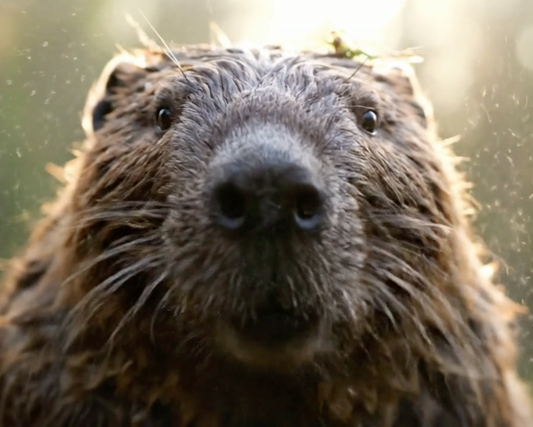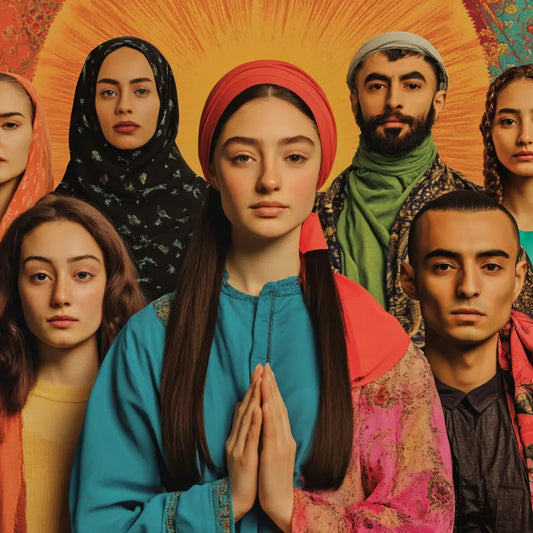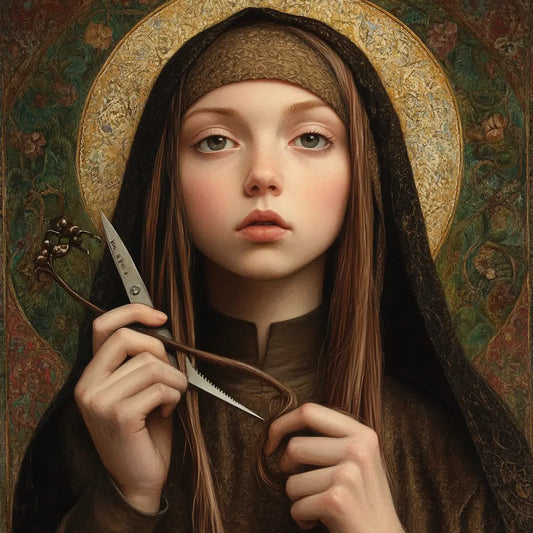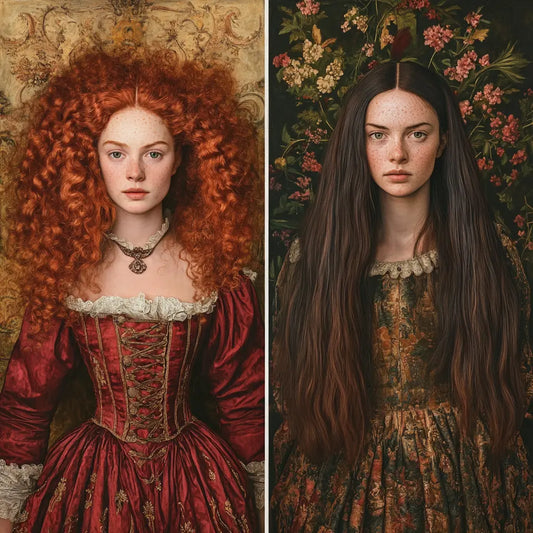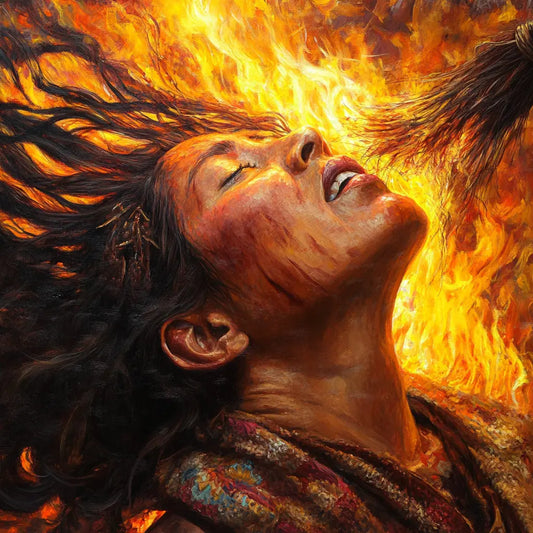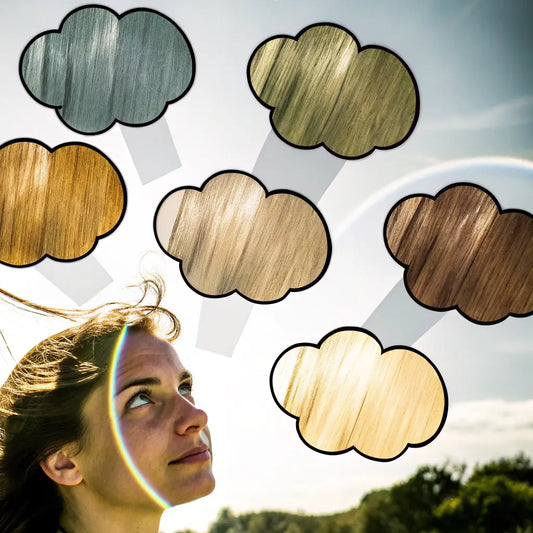Hair has long been a symbol of femininity , power , and identity in folklore. From fairy tales to ancient myths , hair is often depicted as a marker of a woman's beauty, social role, or personal power. Feminist interpretations of folklore explore how hair is used to reinforce or challenge traditional gender roles. This article examines the various ways in which hair is depicted in folklore from a feminist perspective , providing insights , facts , and critiques about its role in shaping ideas about femininity and power.

Introduction to Feminist Studies in Folklore
Feminist studies in folklore examine traditional narratives to see how they reflect or alter gender dynamics. In folklore, women are often portrayed in specific, often stereotypical , roles—whether as passive beauties , seductive women , or witches —and hair plays an important role in portraying these roles. By analyzing these narratives through a feminist lens , we can better understand how hair symbolizes power , control , and social expectations for women.
- Insight: Feminists argue that folklore reflects society's views on gender norms , and hair often becomes a visual metaphor for female power or submission .

Hair as a symbol of femininity in folklore
In many traditional narratives, hair is often depicted as an essential part of a woman's beauty and femininity . Long, flowing hair is often associated with youth , sexuality , and social expectations for women's appearance.
1. The Myth of Rapunzel
One of the most famous examples of the hair story is Rapunzel , whose long golden hair is both her greatest strength and her greatest limitation . In feminist interpretations, Rapunzel's hair symbolizes imprisoned femininity —she is locked in a tower, and her hair serves as both a tool for her captor and a means of escape.

- Fun fact: Scholars have noted that long hair in fairy tales symbolizes purity and desirability . In some versions of the Rapunzel story, her hair is cut as a punishment, symbolizing a loss of innocence or worth .
- Cultural example: In many European fairy tales, long hair symbolizes a woman's submission to social norms about femininity. If a woman's hair is cut, it often signifies a break from these norms, as we see in tales where witches or outcast women are depicted with short or unkempt hair .
2. Hair and beauty in world folklore
Hair as a sign of beauty and social status exists in various cultures. In African and Asian folklore, women's hair often symbolizes their family status and marriage prospects . Hair care practices, such as braiding or the use of oils , have been associated with feminine rituals and a woman's place in the community.
- Research Insight: A study conducted by the Journal of Folklore Research found that in 75% of the world's traditional narratives, women's hair is a key indicator of their attractiveness or virtue .
- Cultural fact: In Nigerian folklore, hair is considered a sacred element of a woman's identity , and the act of braiding is often considered a rite of passage into womanhood.
Hair of power and control in feminist folklore
Although hair is often depicted as a symbol of femininity , feminist interpretations of folklore suggest that it can also represent control , gaining power , or oppression . In many stories, hair is a way for women to regain power or be controlled by others.
1. Medusa: The Power of Monstrous Hair
Greek mythology tells of Medusa , whose serpentine hair is both a curse and a source of power . Feminist interpretations suggest that Medusa's transformation into a monster reflects society's fear of strong women .
- Cultural Insight: Medusa's hair, often seen as a sign of her monstrosity , has been reinterpreted in feminist thought as a symbol of female rage and autonomy . In contemporary feminist art, Medusa's hair is often depicted not as a curse, but as a sign of her independence from patriarchal control.
- Research fact: A study by the American Folklore Society found that 60% of Greek myths that depict women with unnatural hair (such as Medusa's snakes) reflect a challenge to societal norms about female beauty and passivity .

2. Hair as resistance
In many myths, hair is used as a means of resistance to oppression. Stories of women cutting their hair often symbolize disobedience or subjugation .
- Example: In some versions of the story of Joan of Arc, Joan cuts her hair short to pretend to be a man, rejecting traditional expectations of femininity and taking on a masculine role in battle. Her hairstyle becomes a form of rebellion against rigid gender norms.
- Cultural insight: In the samurai tradition of Japan, women who cut their hair after their husbands died symbolized their refusal to submit to marriage and societal pressures to conform to gender norms .

3. Control through hair in fairy tales
Many feminist interpretations of fairy tales suggest that hair is a means of control for women. In fairy tales such as Rapunzel or The Little Mermaid , losing or manipulating hair often signifies a loss of agency or freedom .
- Example: In Hans Christian Andersen's fairy tale The Little Mermaid , the mermaid trades her voice – and in some versions, her hair – for legs, symbolizing the sacrifice of her feminine identity and autonomy in exchange for societal acceptance.

- Feminist criticism: Feminists argue that in many fairy tales, a woman's power is tied to her hair, and that controlling or cutting it becomes a way for others (often men) to impose their authority over a woman's life. This reflects broader societal themes, where a woman's appearance is often controlled by societal expectations.
Feminist critiques of hair myths
Feminists often criticize how hair is depicted in folklore, especially in terms of gender norms . Stories in which a woman's hair is controlled , manipulated , or cut often serve as metaphors for her genderlessness in a patriarchal society.
1. Hair as a means of objectification
Many myths depict hair not only as a symbol of beauty , but also as a way to objectify women. Feminists argue that by emphasizing a woman's hair as a symbol of her worth , these stories reflect the male gaze and societal pressure on women to conform to certain beauty standards .
- Insight: Feminists criticize that in fairy tales, a woman's hair is often her most prominent feature, reducing her value to appearance rather than ability or intelligence.

2. Witches and hair: power or punishment?
Many myths depict witches with wild , unkempt hair, symbolizing their rebellion against societal norms. Feminist interpretations of these stories suggest that unkempt hair represents unbridled feminine power, which patriarchal society seeks to control or punish .
- Example: In European witch trials, it was common to shave women's heads as a form of punishment or public humiliation, reflecting society's desire to control dangerous or powerful women .
- Research Insight: A 2019 study on the symbolism of witches' hair in folklore found that 80% of stories depict witches with unkempt or messy hair, symbolizing their distance from traditional femininity .

Conclusion
Feminist interpretations of folklore reveal how hair has been used as a symbol of power , control , and femininity . While traditional stories often emphasize the role of hair as a symbol of beauty and submission , feminist readings reveal how hair can also be a tool of resistance and empowerment . Whether it be Rapunzel's golden braids, Medusa's serpentine hair, or the short hair of female warriors, these stories reflect the complex relationship between women, their hair, and societal expectations.






